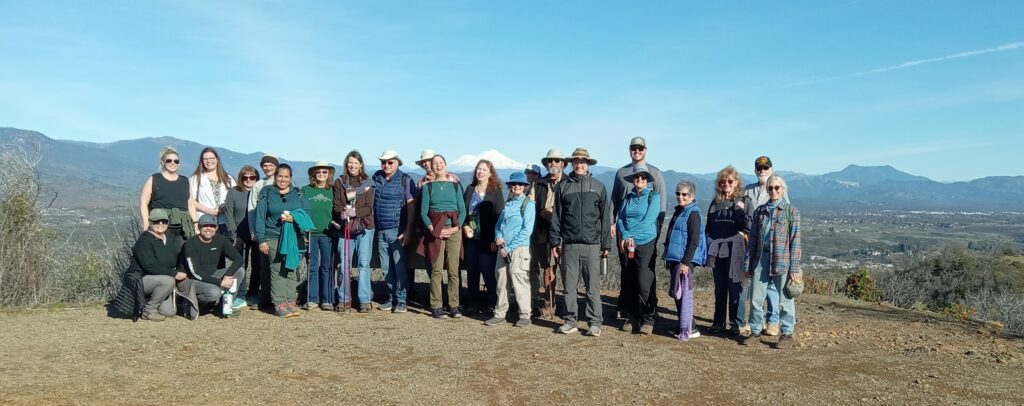
Photo by Lisa Ross
We had a great turnout for our annual SEA/CNPS field trip up the Westside Trail to the “Top of the World,” the highest hill in the trail complex. We had approximately 28 people on the field trip, which made it difficult for everyone to hear all of the plant identification, but many new friendships were made.
Everyone was given a list of plant species from before the Carr Fire and several species have almost disappeared from areas of high-intensity burns including gray pines and several Ponderosa pines. Surprisingly the few knob cone pines that were in the area before the Carr Fire seemed to be the only conifers resprouting and they are growing quite fast.
One new plant since the fire is stinkwort, a prolific invasive plant in California that was only seen on these trails after the Carr Fire. One stinkwort plant on the trail looked dead and most of the flowers had already gone to seed, but surprisingly there were new flowers on the plant almost ready to open. SEA plans to have a volunteer stinkwort removal crew pull up and bag all the plants we can find next fall.
The walk took a little under three hours to walk the four miles, but we identified plants and features of the surrounding landscape and socialized on the way up. This is a hike that a person in decent shape can make in under 90 minutes.
We had many members of the SEA alliance on the field trip: Amy Henderson, President of the Shasta Group of CNPS; Sandy Harrison, President of the Trails and Bikeways Council; Lisa Ross and Ray Pfister, Horsetown Clear Creek Preserve Board members; MaryAnn McCrary, Cochair of North State Climate Action as well as members of Sierra Club and Wintu Audubon Society.